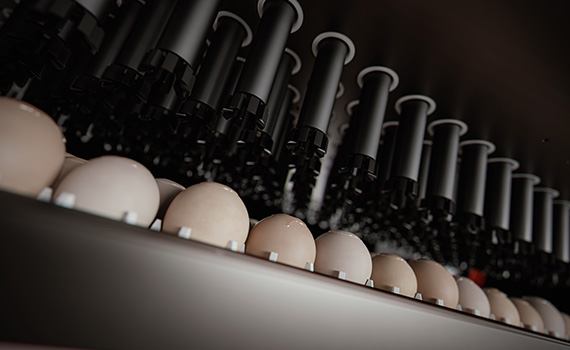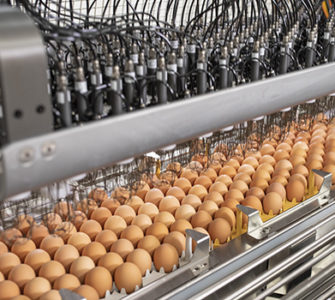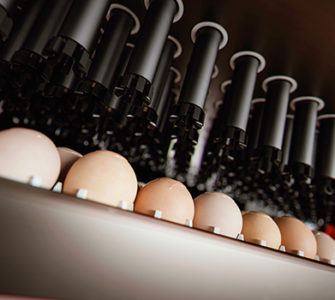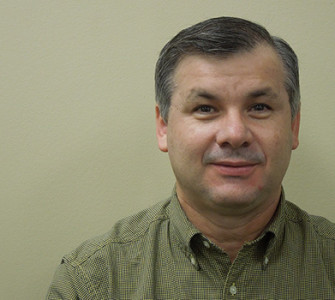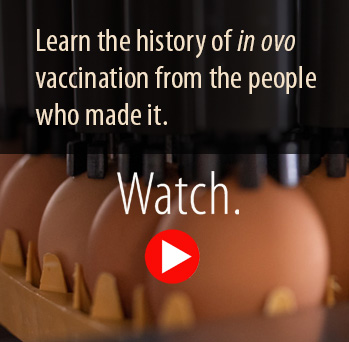How to ensure successful installation of in ovo technology
In ovo vaccination is starting to take off in hatcheries across the Asia-Pacific. To date, more than 50 Embrex® Inovoject® systems are installed in the region, accounting for 80% of devices used for in ovo vaccination. With an upward trajectory predicted, how can successful installation and high chick quality be ensured, especially when the technology is new to most customers?
It’s all about establishing baselines and providing support throughout the process, say two Zoetis experts.
“Being set up for success matters all the way through — not only for the installation of the device. Our manufacturing department has done a really good job perfecting the assembly of our biodevices, with really strong quality control,” said Jonathan Abbott, global biodevice technical and operational support manager.
“That really helps to make the installation a lot easier, because the devices are pretty much ready to ‘plug and play’ at that point, with only certain minor adjustments for our field service specialists to make. This helps us to focus more on the customer training aspect.”
Focus on hatchery biology
Taking a whole-hatchery view that considers all the factors that contribute to good chick health and development is the bedrock of successful installation and use of in ovo vaccination technology, explained Ekapol Pruengpanyanont, biodevice support specialist.
“In ovo vaccination is not just the device; it’s about the biology within the hatchery. So we have to evaluate the site before any customer signs an agreement to lease our equipment. We assess a site by sampling and analyzing microbiological cultures, to see what the bacteria or fungus load looks like and if it’s suitable for in ovo vaccination,” he said.
“The technology means you’re going to put a hole into the eggs; that is basically the embryo exposed to the environment. And if you have bacteria or fungus in the hatchery, you would incubate those too.” But with good hygiene practices, in ovo vaccination has proven to be the best vaccination method to protect chicks against diseases.1
If a site’s condition is not conducive to in ovo vaccination, installation is not advised. However, should a hatchery have slightly below-average conditions and a willingness to improve, the Zoetis hatchery support and technical team can still work collaboratively with the hatchery on a targeted approach to reducing microbial load in key areas.
Water contamination can pose a major threat to the hygiene of the vaccination procedure in some parts of Asia, Pruengpanyanont said. In some cases, customers are advised to use bottled water — but only after the chosen brand has been tested for microbiological content. Another issue commonly detected is contamination in the hatch basket. In this case, the crucial advice is around what chemicals to use to eliminate the issue.
From installation to testing
Once an agreement is signed and the technology is in place, further sampling is done to confirm that the environment is clean enough to begin vaccinating. Then, the system itself will be tested and validated. These checks are particularly important when the equipment is being imported from the US to Asia, he explained.
During the initial vaccination, a small batch of eggs will be used, with residue testing after 2 days. Eggs are opened and tested head-to-head, whereby in ovo and manually vaccinated eggs of the same age and from the same flock, set and hatcher are compared. Alterations are made if necessary, and the quantities are increased until the vaccination quality is such that it is possible to use the technology for all eggs at the hatchery.
Training breeds confidence
Training is crucial for successful operation, as is ensuring buy-in from producers who may be unfamiliar with the technology, Abbott said.
Zoetis field service specialists have tended to be trained on the device in person, but the Covid-19 pandemic has hastened moves toward interactive remote training, he added. GoPro cameras and other audio/visual equipment have proved invaluable in this, while Microsoft HoloLens smart glasses have been used to get a first-person view inside hatcheries during installations.
Knowledgeable and equipped field staff is one thing, but making sure those operating the devices day-to-day are using them to their optimum potential is another, he noted.
“Our technicians who give the customer training are probably the most critical part in ensuring success in the market. If the customers aren’t trained, or they don’t retain it, they likely won’t operate or follow best practices correctly. The result of improper training may mean they’re not going to get the results that the device is capable of delivering,” he explained.
To help ensure compliance with best practices, there are further reminders provided in the form of instructional placards, documents and diagrams installed on hatchery walls.
Comprehensive service prolongs device life
Managing a complex and nuanced process such as the vaccination of developing birds always raises questions from time to time, and continuous customer support allows for any issues to be addressed promptly, Pruengpanyanont said.
Technical support is aided by a preventative and proactive approach to maintenance of the devices, which can involve replacing parts before they may cause a fault, and so avoiding any unnecessary downtime in operations. Biological support is also essential in ensuring confidence. For example, if a customer is unsure of hatch results, eggs are opened to carry out residue analysis — a deep examination of the root cause of any problems.
The full-service approach not only helps ensure successful vaccination of flocks but also contributes to the longevity of the in ovo machinery on production sites.
“If the device is regularly serviced and customers follow best practices and processes, it’s going to be a well-performing machine for a long time,” Abbot said, noting that in the US — where 99% of broiler chicks are vaccinated in ovo — customers have devices that are still running well after 20-plus years.
“This may seem like a complex process to support, but the investment is worthwhile, as evidenced by the fact that two-thirds of broiler eggs globally are now vaccinated in ovo, with this figure expected to continue growing.”
1 Barbosa T, Williams C, Villalobos T. Efficacy and Marek’s Disease Protection Comparison Between Different Vaccination Methods. World Vet Poult Assoc Confer. 2013:217.
MM-16994
Posted on September 20, 2022



